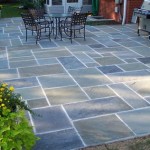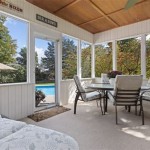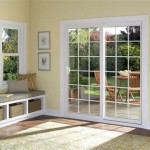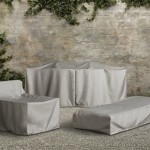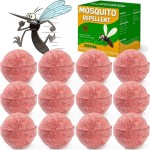Decorative Coolers for the Patio
Patios serve as extensions of living spaces, providing areas for relaxation and entertainment. A key element in creating a comfortable and functional patio is effective temperature regulation, especially during warmer months. Decorative coolers offer a stylish and practical solution for keeping beverages and food chilled while enhancing the aesthetic appeal of the patio.
Key Considerations When Choosing a Decorative Cooler
Selecting the right decorative cooler involves considering various factors to ensure it meets both functional and aesthetic needs:
- Capacity: Cooler capacity should align with typical usage and the number of people usually entertained.
- Material: Coolers are constructed from various materials, each with its own benefits and drawbacks. Common materials include plastic, metal, and wood.
- Insulation: Effective insulation is crucial for maintaining desired temperatures and minimizing ice melt.
- Portability: Consider the cooler's weight and whether it includes wheels or handles for easy movement.
- Style: Choose a cooler that complements the existing patio décor and personal preferences.
Types of Decorative Coolers
The market offers a diverse range of decorative coolers to suit different styles and needs:
- Wicker Coolers: Wicker coolers offer a classic, natural look that blends seamlessly with outdoor settings. They often feature removable liners for easy cleaning.
- Metal Coolers: Metal coolers, often made of galvanized steel or powder-coated aluminum, provide durability and a modern aesthetic. They are resistant to rust and offer excellent insulation.
- Wooden Coolers: Wooden coolers exude a rustic charm and can be customized with stains or paints to match existing patio furniture. They offer good insulation and a sturdy construction.
- Rolling Coolers: Rolling coolers provide convenient mobility, especially for larger gatherings. They typically feature heavy-duty wheels and sturdy handles.
- Built-in Coolers: Built-in coolers offer a permanent solution for outdoor chilling needs. They are integrated into outdoor kitchens or patio structures and provide a seamless look.
Maintaining Your Decorative Cooler
Proper maintenance ensures the longevity and performance of a decorative cooler:
- Regular Cleaning: Clean the cooler interior and exterior regularly with mild soap and water. Avoid harsh chemicals that can damage the cooler's finish.
- Proper Storage: Store the cooler in a dry, shaded area when not in use to prevent damage from the elements.
- Leak Prevention: Check for and address any leaks promptly to prevent water damage and maintain optimal cooling performance.
Enhancing Patio Aesthetics with Coolers
Decorative coolers can be strategically used to enhance the overall aesthetic of a patio:
- Coordinate with Furniture: Choose a cooler that complements the style and color scheme of existing patio furniture.
- Create a Focal Point: A uniquely designed cooler can serve as a focal point, adding visual interest to the patio.
- Use as a Side Table: Some coolers are designed to double as side tables, providing additional surface area for drinks and snacks.
Benefits of Using Decorative Coolers
Decorative coolers offer several advantages for outdoor entertaining and relaxation:
- Temperature Control: They provide a convenient way to keep beverages and food cold, enhancing enjoyment during outdoor gatherings.
- Aesthetic Enhancement: They add a stylish touch to the patio, complementing existing décor and creating a more inviting atmosphere.
- Functional Decor: They serve a practical purpose while also contributing to the overall aesthetic of the outdoor space.
Choosing the Right Size and Capacity
Cooler size and capacity should be carefully considered based on individual needs:
- Small Gatherings: For small gatherings, a compact cooler with a smaller capacity is sufficient.
- Large Parties: Larger parties require a higher capacity cooler to accommodate the needs of all guests.
- Frequency of Use: Consider how often the cooler will be used to determine the appropriate size and features.
Materials and Durability
Cooler materials impact durability and overall performance:
- Plastic: Plastic coolers are lightweight and affordable, but may not offer the same level of insulation as other materials.
- Metal: Metal coolers are durable and provide excellent insulation, but can be heavier and more expensive.
- Wood: Wooden coolers offer a classic aesthetic and good insulation, but require regular maintenance to prevent weathering.
Placement and Accessibility
Strategic placement enhances the functionality of a decorative cooler:
- Proximity to Seating: Place the cooler near seating areas for easy access to chilled beverages and food.
- Shade: Position the cooler in a shaded area to minimize ice melt and maintain optimal cooling performance.
- Accessibility: Ensure the cooler is easily accessible for both guests and the host.

Double Cooler Stand Plans Patio Deck Etsy
Keter Patio Cooler And Beverage Cart Costco

19 Clever Diy Outdoor Cooler Ideas Let You Keep Cool In The Summer

Backyard Discovery 100 Qt Patio Cooler Acacia 2204010com The Home

Backyard Expressions Patio Home Garden 87 Qt Wooden Cooler W Side Shelves 913284 The

Outdoor Coolers And Ice Chests Beachfront Decor Patio Cooler Wooden Patios

19 Clever Diy Outdoor Cooler Ideas Let You Keep Cool In The Summer

How To Build A Diy Patio Outdoor Cooler Pete

19 Clever Diy Outdoor Cooler Ideas Let You Keep Cool In The Summer

How To Build A Diy Patio Cooler Cart Fixthisbuildthat

